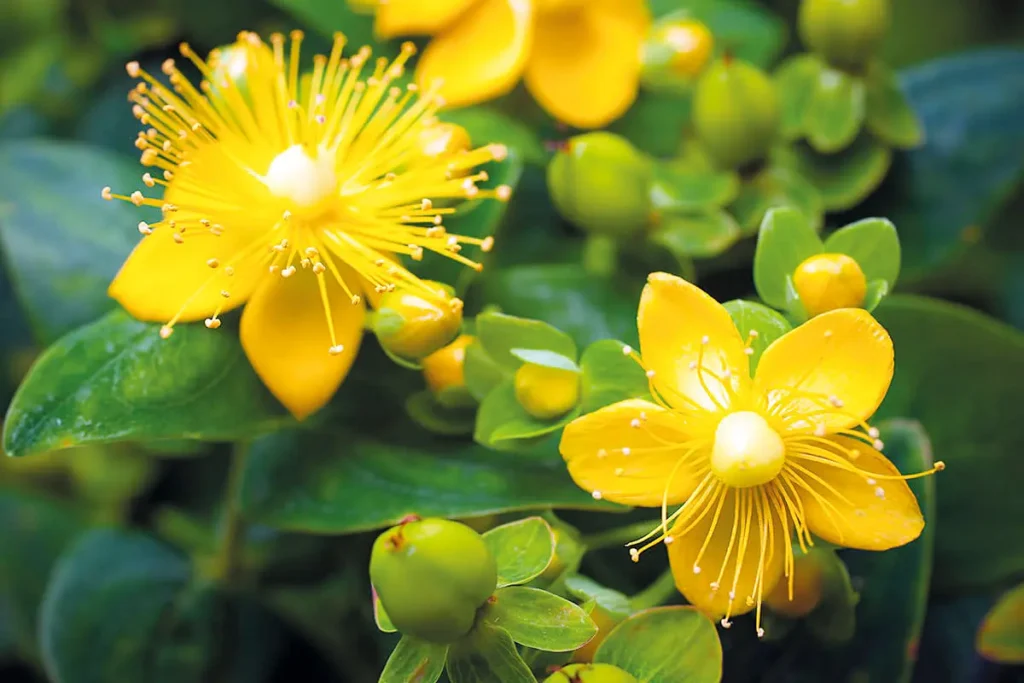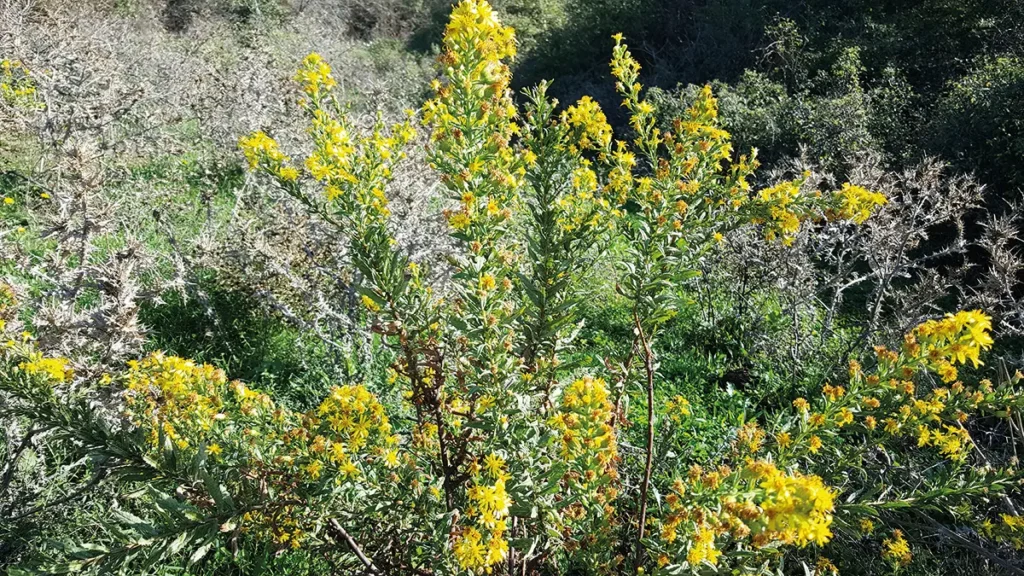


Nome Italiano: Iperico / Erba di San Giovanni
Nome scientifico: Hypericum perforatum L.
Nome Gallurese: Alba di Santu Juanni
Descrizione:
L’iperico è una pianta perenne, con fusti arrossati, eretti e ramosi, raramente supera gli 80 cm. Le foglie presentano ghiandole traslucide che in trasparenza sembrano dei forellini con sepali seghettati e fusto cilindrico. I fiori non sono altro che l’inflorescenza della pianta, conosciuta anche con il nome di erba di San Giovanni.
Proprietà e usi:
Pianta officinale dalla quale si ottiene un olio lenitivo, cicatrizzante. All’iperico sono attribuite attività antidepressive confermate da diversi studi e trials. L’estratto di iperico, oltre ad essere impiegato in ambito fitoterapico, rientra nella composizione di un vero e proprio farmaco (Nervaxon®) indicato per il trattamento di sindromi depressive di grado lieve-moderato. È impiegato per via topica nel trattamento d’infiammazioni della cute grazie all’azione antiflogistica esercitata in particolare dall’ipericina.
Curiosità e miti:
In Gallura l’Iperico veniva utilizzato come unguento contro le bruciature e in ogni cucina non mancava mai una boccetta di quest’olio portentoso. Dalla tradizione millenaria ai moderni impieghi clinici in medicina e psichiatria per le sue proprietà fitoterapeutiche, in particolare antidepressive e antivirali. Dietro l’uso di questa pianta, anticamente conosciuta anche con il nome di Fugademoni, si celava l’ancestrale paura dell’uomo nei confronti delle malattie neurologiche le cui cause sconosciute venivano attribuite ad influssi malvagi. Una leggenda gallurese narra di mogli che utilizzavano questa pianta come rimedio “antimalinconia”, quando i mariti si assentavano da casa per lungo tempo per motivi di lavoro.
Per scongiurare le avversità, il 23 giugno, notte di San Giovanni, si va alla ricerca di erbe spontanee con a base i fiori dell’Iperico. È la notte del solstizio d’estate: si fanno i falò propiziatori e si prepara l’acqua di Santu Juanni per raccogliere la rugiada, che simboleggia la luna. L’infuso di fiori, usato la mattina per lavarsi viso, occhi e corpo, porterebbe fortuna e prosperità grazie all’incredibile potenza dei fiori in grado di proteggere i raccolti, allontanando ogni calamità.

Italian name: Iperico / Erba di San Giovanni
Scientific name: Hypericum perforatum L.
Gallurese name: Alba di Santu Juanni
Description:
St. John’s Wort is a perennial plant with blushing, erect, branching stems, rarely exceeding 80 cm. The leaves have translucent glands that look like small holes in transparency with serrated sepals and a cylindrical stem. The flowers are nothing more than the inflorescence of the plant, also known as St. John’s wort.
Properties and uses:
Officinal plant from which a soothing, healing oil is obtained. St. John’s Wort is attributed antidepressant activities confirmed by various studies and trials. As well as being used in phytotherapy, St. John’s Wort extract is part of the composition of an actual drug (Nervaxon®) indicated for the treatment of mild to moderate depressive syndromes. It is used topically in the treatment of skin inflammations thanks to the antiphlogistic action exerted in particular by hypericin.
Curiosities and myths:
In Gallura, Hypericum was used as an ointment against burns, and a small bottle of this portentous oil was never missing from every kitchen. From millenary tradition to modern clinical uses in medicine and psychiatry for its phytotherapeutic properties, particularly antidepressant and antiviral. Behind the use of this plant, also known in ancient times as Fugademoni, lay the ancestral human fear of neurological diseases, the unknown causes of which were attributed to evil influences. A Gallura legend tells of wives who used this plant as an ‘anti-malinxia’ remedy when their husbands were away from home for long periods of time for work.
To ward off adversity, on 23 June, the night of St John’s Day, people go in search of wild herbs with Hypericum flowers as a base. It is the night of the summer solstice: propitiatory bonfires are made and Santu Juanni water is prepared to collect dew, symbolising the moon. The infusion of flowers, used in the morning to wash the face, eyes and body, would bring good luck and prosperity due to the incredible power of the flowers to protect crops, warding off all calamities.
